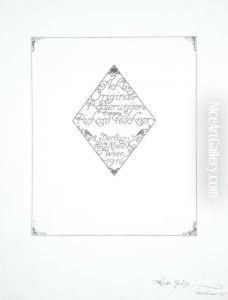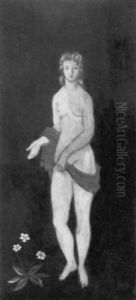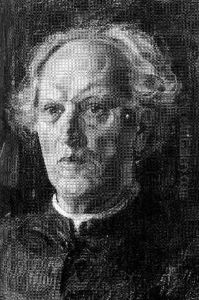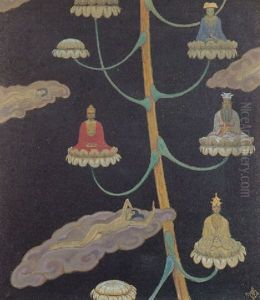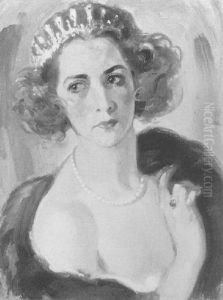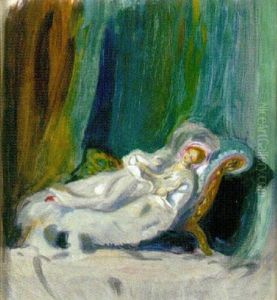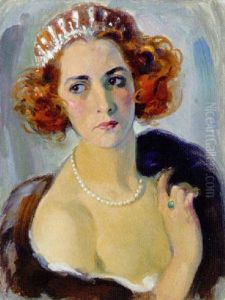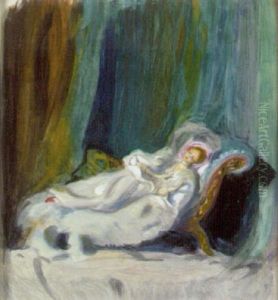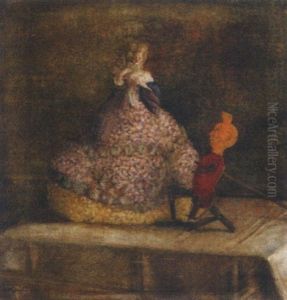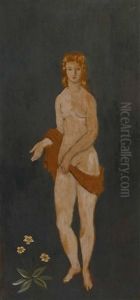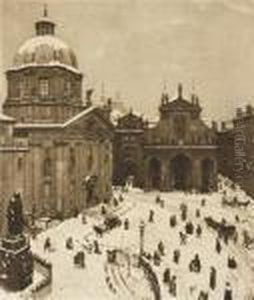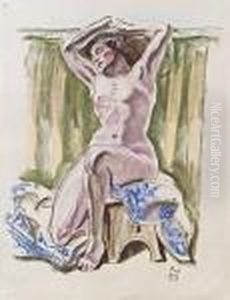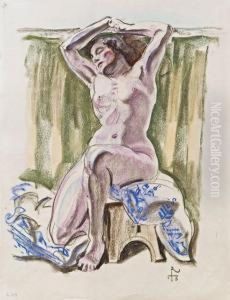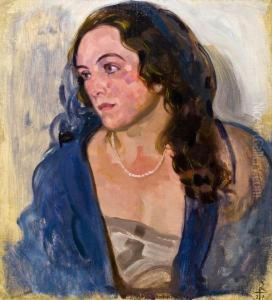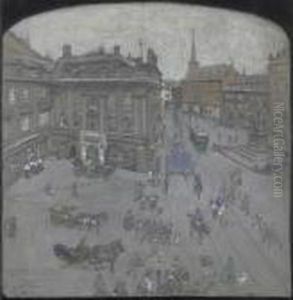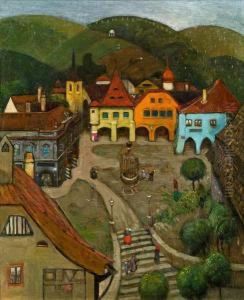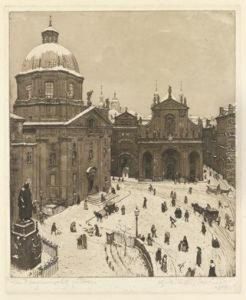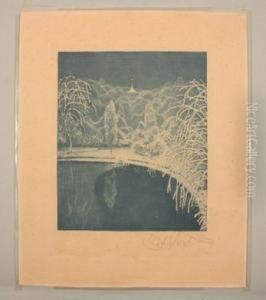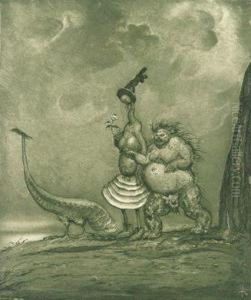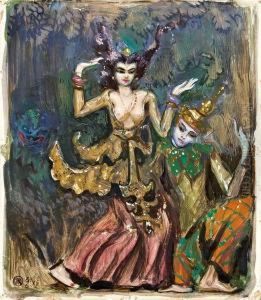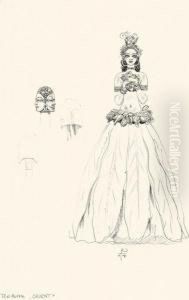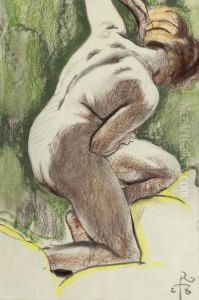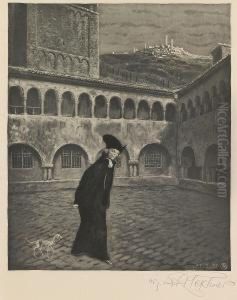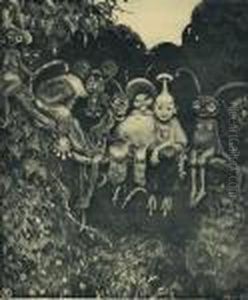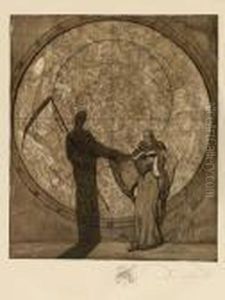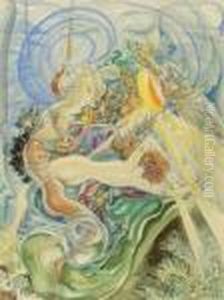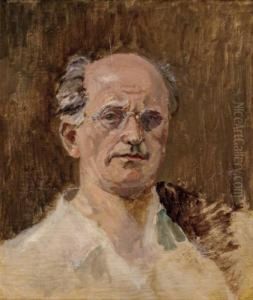Richard Teschner Paintings
Richard Teschner was an Austrian artist, puppeteer, and stage designer, born on March 22, 1879, in Karlsbad, Bohemia, then part of the Austro-Hungarian Empire (now Karlovy Vary, Czech Republic). He is best remembered for his significant contributions to the art of puppetry, particularly for his development of the 'Figurenspiegel'—a unique form of puppet theatre that combined elements of Javanese wayang puppetry with Western theatrical traditions.
Teschner studied at the Academy of Fine Arts Vienna, where he was influenced by the Symbolist movement and the works of Gustav Klimt and other artists associated with the Vienna Secession. His early career was marked by his work as a graphic artist and illustrator, but his interests soon turned towards the theater and, more specifically, puppetry, which he felt offered new expressive possibilities for visual art.
In 1912, Teschner moved to Vienna, where he would spend the rest of his career and life. It was here that he invented the Figurenspiegel, a sophisticated puppet theatre that utilized light, shadow, and color in innovative ways to create a mesmerizing visual experience. The Figurenspiegel performances were notable for their intricate hand-carved puppets, detailed sets, and the use of glass rods to manipulate the puppets, allowing for greater flexibility and expressive movements than traditional string marionettes.
Throughout the 1920s and 1930s, Teschner's work gained recognition in Austria and abroad. He was a contemporary of artists and intellectuals in Vienna during a vibrant period of artistic innovation. Despite the political upheavals of the era, including the rise of Nazism and the onset of World War II, Teschner continued to create and perform with his puppets, although the later years of his life saw a decline in public interest in puppetry.
Richard Teschner died on July 4, 1948, in Vienna. His legacy lives on through his contributions to the art of puppetry and the visual arts. Today, his work is celebrated for its creativity, technical mastery, and the unique blend of Eastern and Western artistic traditions that characterized his approach to the Figurenspiegel. The Austrian Theatre Museum in Vienna houses a collection of his puppets and stage designs, ensuring that Teschner's innovative work continues to inspire artists and audiences alike.
